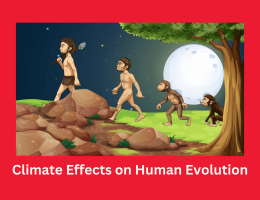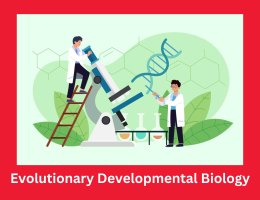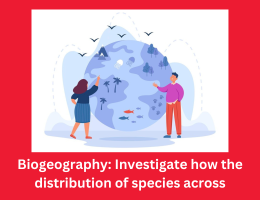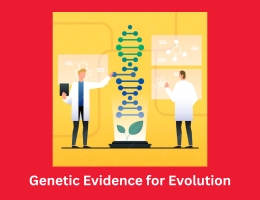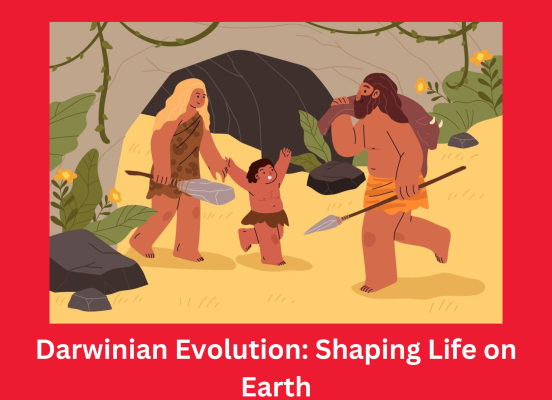
Darwinian Evolution: Shaping Life on Earth
- By admin --
- Monday, 11 Mar, 2024
Charles Darwin's groundbreaking work on evolution revolutionized our understanding of life's diversity. Through his seminal work "On the Origin of Species," Darwin proposed several key principles that underpin modern evolutionary biology. This essay delves into the core tenets of Darwinian evolution, including natural selection, adaptation, and descent with modification, and examines their profound impact on the rich tapestry of life on Earth.
Natural Selection: The Engine of Evolution
At the heart of Darwin's theory lies the concept of natural selection. Natural selection is the process by which heritable traits that enhance an organism's survival and reproductive success become more prevalent in a population over successive generations. This occurs because individuals with advantageous traits are more likely to survive and pass on their genes to their offspring, thus perpetuating those traits within the population.
Consider the classic example of peppered moths during the industrial revolution in England. Prior to widespread pollution, the light-colored morph of the moth predominated, blending in with lichen-covered trees. However, as industrial pollution darkened the tree trunks, the darker morph became advantageous, as it was better camouflaged against the soot-covered bark. Consequently, through natural selection, the frequency of the dark morph increased dramatically, illustrating how environmental pressures can drive evolutionary change.
Adaptation: Nature's Response to Challenges
Adaptation is the process by which organisms become better suited to their environment over time. Natural selection acts as the mechanism through which adaptations arise, as individuals with traits conducive to survival and reproduction are favored by environmental pressures.
The giraffe's long neck development is a remarkable example of adaptability. Giraffes with longer necks had greater access to foliage in settings with tall trees, which gave them a competitive edge in obtaining food. Natural selection tended to prefer individuals with longer necks throughout time, which caused this feature to elongate in subsequent generations. This is an example of how adaptations allow living things to take advantage of ecological niches and flourish in a variety of settings.
Descent with Modification: Tracing Life's Family Tree
The theory of "descent with modification," or "common descent," holds that all living things are connected by a common ancestor and have diverged over billions of years from that ancestor. This idea emphasizes how all life is interrelated and offers a framework for comprehending the diversity and oneness of living things.
Darwin's explanation of the evolutionary tree of life shows how descent with modification can branch out in many ways. By using comparative anatomy, embryology, and molecular genetics, researchers have found strong evidence of shared ancestry. For example, almost every organism shares the same genetic code, suggesting that life originated together. Vestigial features also offer more proof of common ancestry and descent with modification, such as the remains of whales' hind leg bones.
The Grandeur of Evolutionary Diversity
Darwinian evolution has given rise to the amazing kaleidoscope of life we see on earth today. Ranging from plants and animals of different kinds to the complex ecosystems that sustain them, there exist several living forms so diverse each of which is well-devised for its own ecological niche.
Imagine how the Galápagos Islands' Darwin finches evolved by adjusting their diet and bills. The birds diverged into assorted varieties distinguished by specific beak shapes each for various foods, such as feeding on insects or prying open seeds. In so doing, natural selection separates organisms so they can exploit different resources hence giving rise to new configurations and functions exemplified by this type of radiation.
Evolutionary linkages besides show how diverse life is although one. The technique of reconstructing phylogenies through common characteristics and DNA sequences allows animal biologists clarifying the interdependency as well as historical events. The Earth's web of life has been significantly shaped by Darwinian evolution, as seen by its interconnection.
Conclusion: Charles Darwin’s theories of natural selection, adaptation and descent with modification have had a profound impact on how we think about the diversity and interrelations of life. The living universe may be scrutinized in terms of Darwinian evolution, as the product of intricate processes and patterns that have moulded it for billions of years.
Their evolutionary past shapes all living organisms, from the smallest bacterium to the largest mammal. Even today, Darwin’s discoveries continue to affect and enrich modern evolutionary biology, providing an analytical tool for understanding life’s history, diversity and future. In fact it is easy to perceive the intricate web of life that results from natural selection as one marvels further about how diverse evolution has been.


